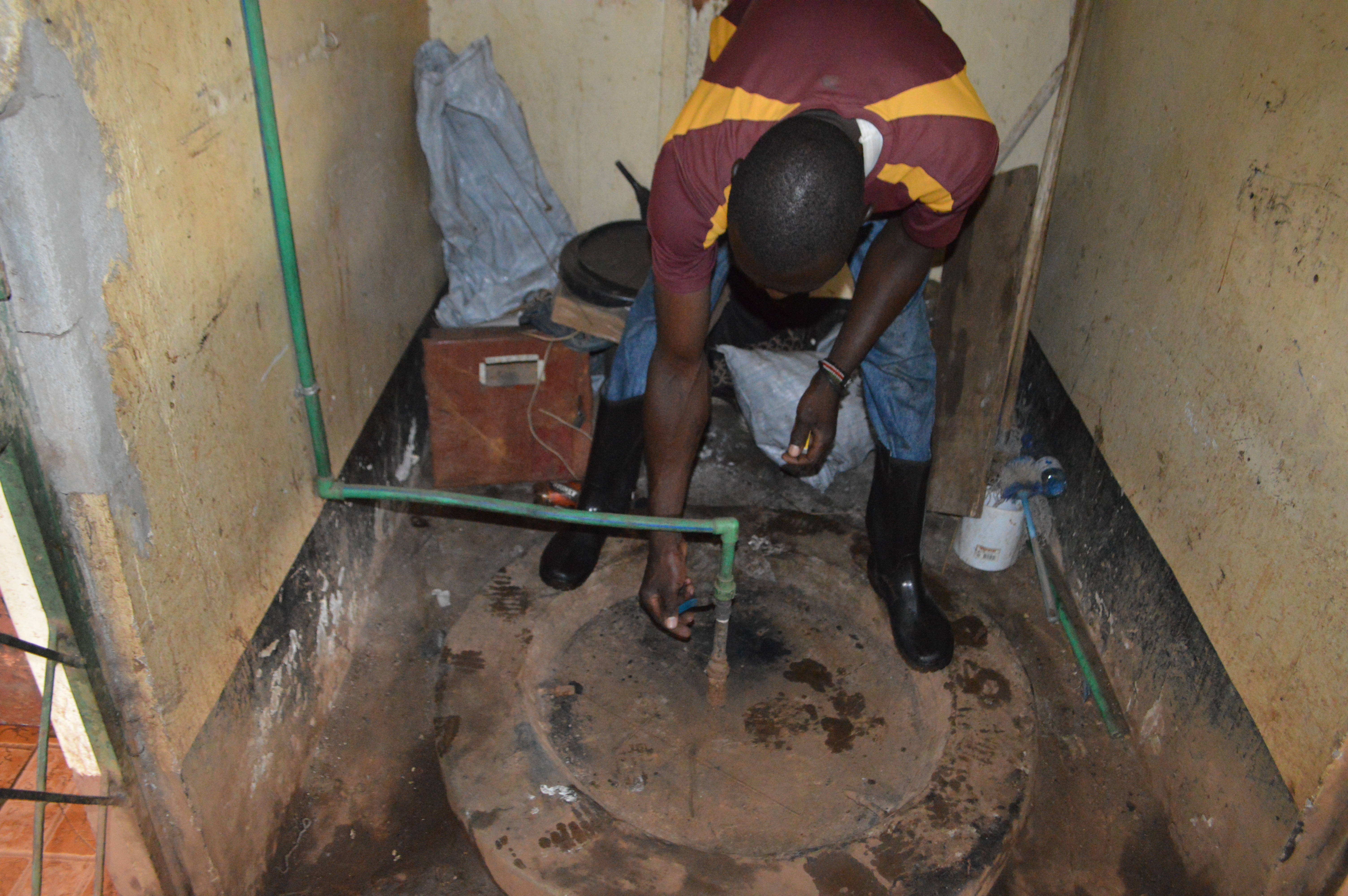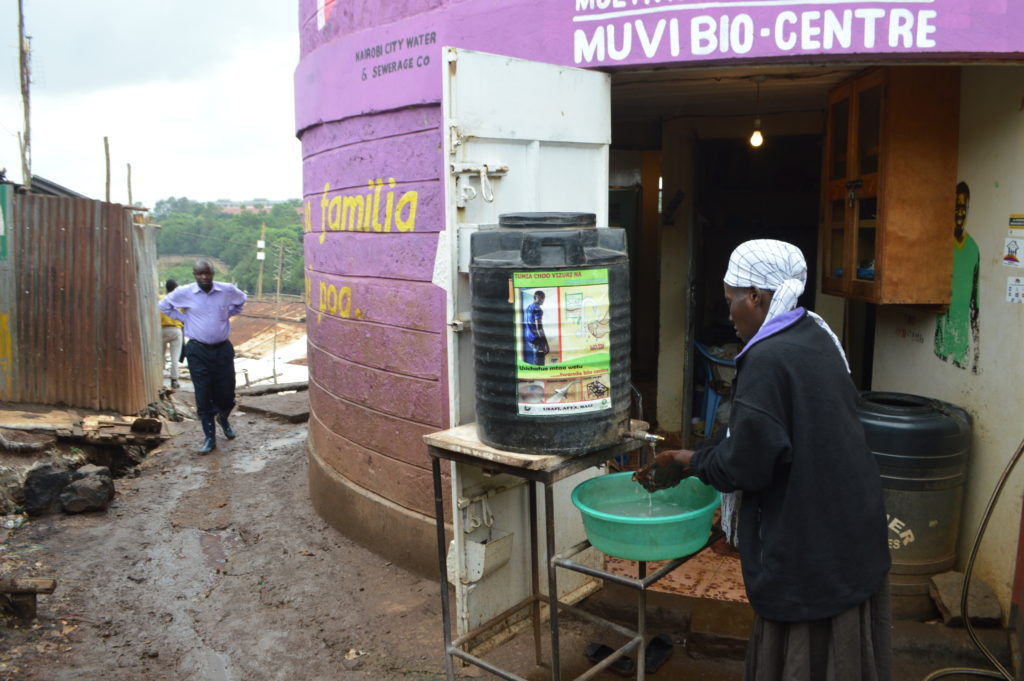By Mary Mwendwa
Jeniffer Aketch a mother of five , has been using a shared pit latrine in Kibera Slums for the last 15 years, she testifies of how the new improved sanitation project of Biocentres have made her life enjoyable.”Since the biocentres came some time back, we can now access clean toilets and bathrooms which do not make our waste get back to our water supply.My children used to get sick from diarrohea every time.With this facility i just pay ten shillings and get to use a clean toilet and also get biogas at small fee to use for my cooking.”
Cases similar to Jennifer’s before the Biocentres came to her rescue are so common in many of informal settlement areas in Kenya.They are among the Six million Kenyans said to have no access to proper hygiene and sanitation services, experts say .
During a recent official launch of important policy documents that are expected to give guidance to actors in the public health sector to ensure standards, safety and quality delivery of hygiene and sanitation services are achieved in the Country.
World Bank Group report indicates that Poor sanitation costs Kenya 27 billion Kenyan Shillings each year, equivalent to US$324 million, according to a desk study carried out by the Water and Sanitation Program. This sum is the equivalent of US$8 per person in Kenya per year or 0.9% of the national GDP.
Such kind of alarming reports are ones that have made stakeholders in public health work hard towards having a guiding framework to help reduce these figures that are draining Kenya’s economy.
Speaking during the official launch which was attended by health sector officials, development partners like world Bank, Unicef , Civil Society, County Government public health officials and Community Based Organizations, at a Nairobi hotel, Dr.Cleapa Mailu , Cabinet Secretary , Ministry of Health noted that Kenya as a country had made strides where only 32 percent of the rural population has access to improved sanitation and 6 million are still defecating in the open .
”It is unacceptable to note that in this era only 27 percent of the population in urban areas can access private improved sanitation. More serious is the sewage coverage which is estimated to be only 12 percent while only five percent of the national water collected through the sewer system is well treated.’’
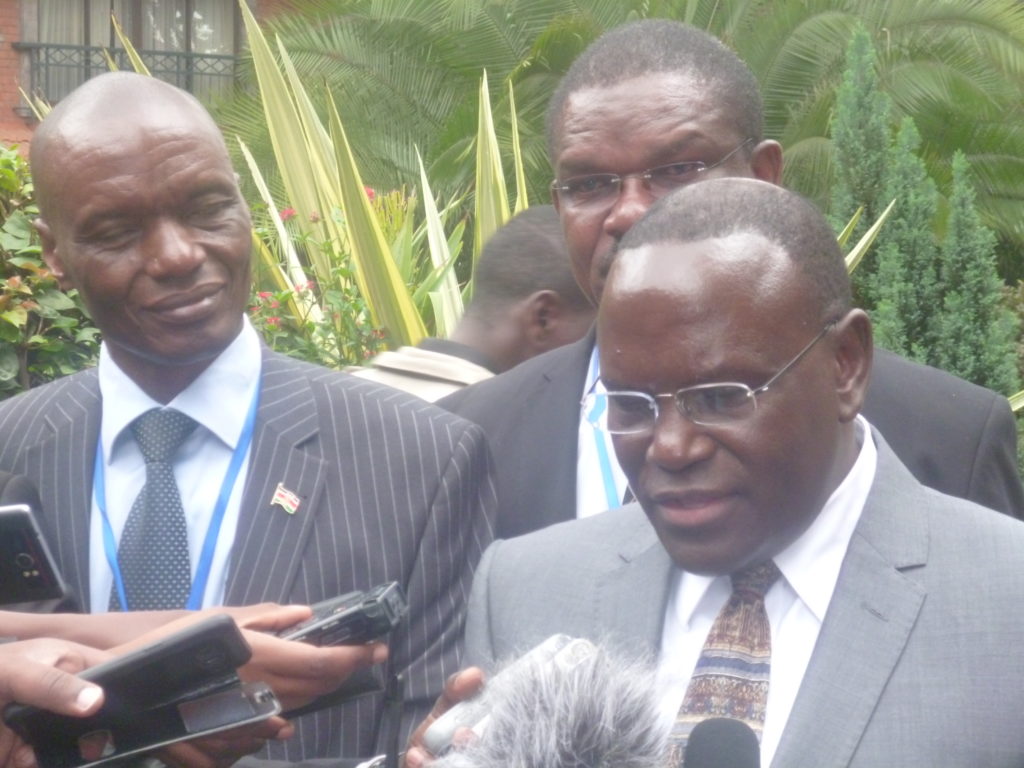
Dr.Mailu also talked about the poor state of poor urban settlements where less than more than half the residents use shallow pit latrines.”Our urban settlements are characterized by uncontrolled and indiscriminate waste disposal leading to clogged storm and massive pollution of water courses.”
In the function were two hygiene and sanitation champions-natural leaders from Nyando –Sub -County from Kisumu County. Janet Odongo and Tom Omullo have seen the famous Nyando Sub – county which has been on limelight because of floods from River Nyando and cholera improve on their toilet coverage.
”We are natural leaders in our communities, my work has seen me work closely with people in villages of kodero, okedha, kochola and kamwamba among others.I started this work of awareness in Nyando back in 2001 when cases of cholera were high due to flooding, people by then were not using toilets and the flooded water which was mostly mixed with fecal matter caused cholera. Children were mostly affected and this contributed to a strain on the families especially treatment of diarrheal diseases.
“We now have eradicated this kind of scenario, people are now concentrating of development projects rather that fighting disease. Children in schools are some of our targets because they deliver the message home effectively. We also help supply water treatment supplies like water guard to help in keeping water clean. Nyando now is an example in Nyanza where people want to learn from .”A jovial Janet narrates.
Tom has a similar story, “I work closely with public health office in Nyando where villages such as kaluande, kokech, kobondo and others are targeted. cholera cases in my region are a gone case. I do my follow ups at household level to see people have toilets that are well built and give them any information that is relevant to sanitation.Iam passionate about this work and above all , I see change in the way people live, that is what gives me hope for tomorrow.”A charming Omullo says.
Indeed champions like Janet and Tom are a symbol of hope in fighting open defecation. Which is still a big problem especially in the pastoral communities in Kenya.
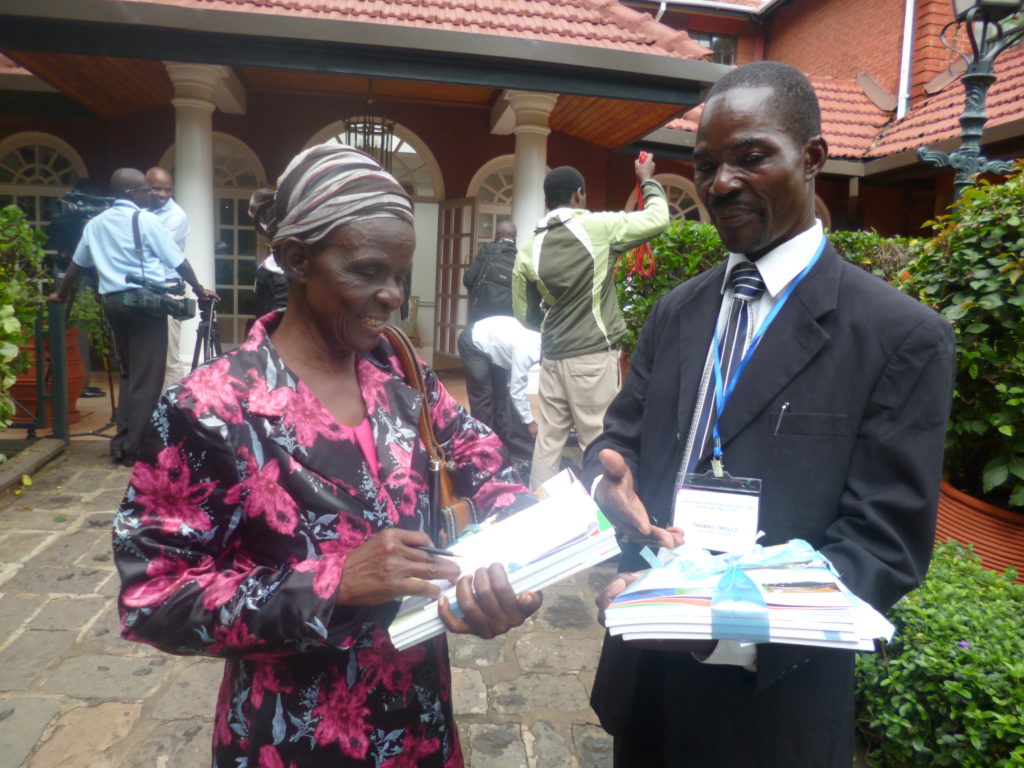
Nyando’s success story can only be attributed to concerted efforts through various partners that have worked closely with the public Health Sector. According to Dr.Nicholas Makotsi, Sub – County Public Health Officer ,Nyando , “We work through a model, where we are each other’s keeper on matters of hygiene and sanitation.
As a public health sector in Nyando we empower, partner and provide support supervision. For example in 2008 cholera was very common because of the water from shallow wells , we trained and informed people about treating water, building latrines that were raised and also properly built.This has seen a transformationin public health and cholera is no longer a threat in the region.”
Similarly, Dr.Kepha Ombacho, Ag.Director, Public Health , ministry of Health, highlighted some of the challenges that face the health sector in terms of hygiene and sanitation.”We realize that most informal settlements have poor sanitation and hygiene and also most counties apart from a few like Busia, Kitui and Nyando Sub -County among others have not shown commitment towards improvement of hygiene and sanitation standards for their people.We still have no funds allocated to this noble course too”.He said.
World Bank has been instrumental in providing technical support in the process of Policy document developments and other projects in the county which have seen some areas improve on hygiene and sanitation.Glenn Pearce, Manager , water and Sanitation program –Africa, Word Bank Group talked about the commitment World Bank has by partnering in the struggle towards sanitation improvement.”We will continue to support projects on sanitation because it is not only about increasing access but making access available to everybody.”
Children are a group of population that are highly affected when poor sanitation and hygiene are in place. This comes with increase in diarrheal diseases, soil helminthes and other related ones. Dr.Pirkko Heinonen, Country Director, Unicef noted with a lot of concern how every 15 minutes a child dies of diarrhea in Kenya.”These deaths can be prevented if people had access to proper toilets which do not allow open defecation which brings about some of these diseases that are a threat to children’s lives. She also said that despite Kenya making several steps towards health improvement , 26 percent of Kenyas children are stunted , a figure that is worrying and needs intervention to prevent more children from stunting.
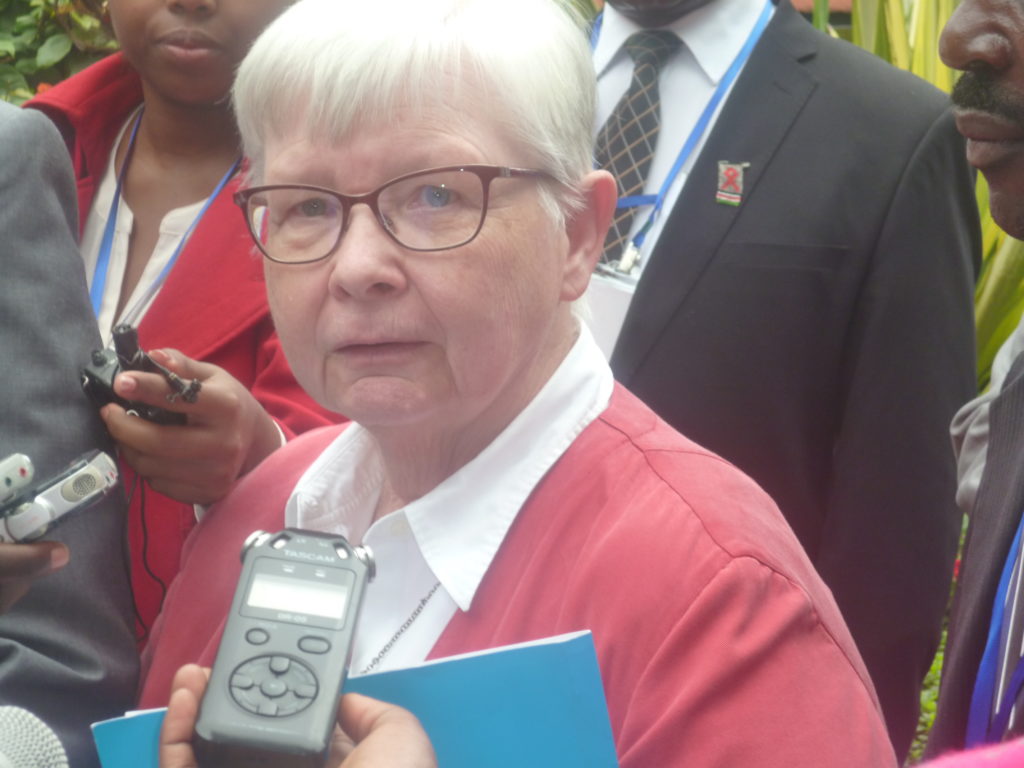
The policy documents namely,Kenya Environmental Sanitation and Hygiene Policy 2016-2030, Kenya Environmental Sanitation and Hygiene Strategic Framework 2016 -2020, Kenya ODF Campaign Framework and The prototype County Environmental Health and Sanitation Bill were handed to various partners who attended the function to help improve through various interventions on hygiene and sanitation in Kenya.

